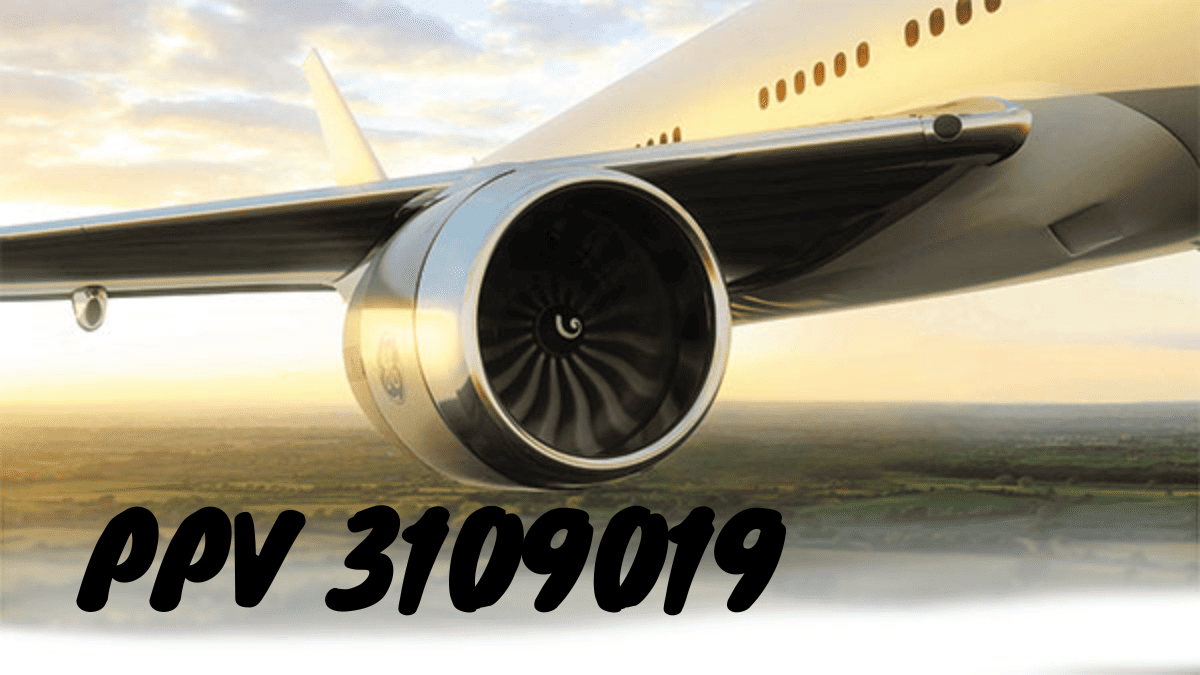PPV 3109019 – Revolutionizing Aviation with Parallel Vortex Tech
In the realm of aviation, innovation constantly pushes the boundaries of efficiency and performance. One such breakthrough is PPV 3109019, also known as Pulsecraft Parallel Vortex. This advanced aerodynamic technology is designed to revolutionize aircraft efficiency by harnessing principles of fluid dynamics to optimize airflow over surfaces. In this comprehensive guide, we delve into the intricacies of PPV 3109019, its applications, benefits, and impact on aviation.
also read: Dönrt – A Culinary Delight Taking the World by Storm
Understanding PPV 3109019 Technology
PPV 3109019 operates on the principle of creating controlled vortices, or swirling flows of air, to streamline airflow over an aircraft’s surfaces. These vortices effectively reduce drag and enhance lift, crucial factors in improving fuel efficiency and overall performance. By strategically managing airflow, this technology minimizes turbulence, resulting in smoother flights and reduced operational costs for airlines.
- Controlled Vortices: The technology generates specific patterns of swirling air to reduce pressure drag and friction.
- Lift Enhancement: By optimizing the airflow, PPV 3109019 increases the lift generated by the aircraft’s wings.
- Turbulence Reduction: This leads to more stable and comfortable flights.
Applications in Aviation
PPV 3109019, renowned for its advanced aerodynamic capabilities, finds diverse applications across the aviation sector, catering to a wide range of aircraft types and operational needs.
Commercial Airliners
For commercial airliners, PPV 3109019 offers substantial benefits in enhancing fuel efficiency and operational reliability. By optimizing airflow over the aircraft’s surfaces, this technology reduces drag and improves lift, thereby lowering fuel consumption per flight. Airlines can extend their aircraft’s range capabilities while simultaneously reducing operational costs, making PPV 3109019 a valuable asset in the competitive airline industry.
- Fuel Efficiency: Significant cost savings and environmental benefits.
- Operational Reliability: Enhanced performance under various flight conditions.
Military Jets
In military aviation, where performance and maneuverability are critical, PPV 3109019 plays a pivotal role. The technology’s ability to streamline airflow and enhance aerodynamic performance contributes to improved aircraft agility and combat effectiveness. Military jets equipped with PPV 3109019 benefit from enhanced mission capabilities, reduced fuel dependency, and increased operational flexibility in diverse combat scenarios.
- Agility: Improved maneuverability for combat missions.
- Mission Capabilities: Extended range and operational flexibility.
Private Aircraft
Private aircraft operators also stand to gain from PPV 3109019’s capabilities, enjoying improved efficiency and extended range capabilities. Whether used for business travel or leisure pursuits, private aircraft equipped with PPV 3109019 can achieve higher speeds, longer endurance, and reduced environmental impact, aligning with sustainability goals and operational efficiency demands.
- Speed and Endurance: Higher cruising speeds and longer flight durations.
- Sustainability: Lower carbon footprint.
Environmental Sustainability
Beyond operational advantages, PPV 3109019 contributes significantly to environmental sustainability in aviation. By reducing fuel consumption and carbon emissions, the technology supports global efforts to mitigate environmental impact. Airlines and operators adopting PPV 3109019 demonstrate their commitment to sustainable aviation practices while meeting regulatory standards and addressing environmental concerns.
Benefits of PPV 3109019
Improved Fuel Efficiency
By minimizing drag, PPV 3109019 reduces the amount of fuel required for each flight, leading to significant cost savings for airlines. This not only enhances profitability but also makes air travel more sustainable.
Enhanced Performance
The technology enhances aircraft maneuverability and stability, contributing to safer and more comfortable flights. Improved lift and reduced turbulence result in better handling and performance across various flight conditions.
Environmental Impact
Lower fuel consumption translates to reduced carbon emissions, aligning with global efforts towards sustainable aviation. This positions airlines as environmentally conscious entities committed to reducing their ecological footprint.
Integration and Development
PPV 3109019 stands as a testament to rigorous aerodynamic research and technological innovation, representing a significant advancement in aircraft efficiency and performance.
Development Process
Developed through extensive aerodynamic research and testing, PPV 3109019 integrates cutting-edge engineering principles with scientific precision. The technology’s development involved collaboration among aerospace engineers, fluid dynamics experts, and aircraft manufacturers to refine its operational effectiveness and reliability.
Engineering Excellence
The integration of PPV 3109019 into existing aircraft designs necessitates meticulous adaptation and calibration. Engineers meticulously tailor the technology to each aircraft model, optimizing its aerodynamic benefits while adhering to stringent safety standards and maintaining structural integrity. This process ensures that PPV 3109019 enhances aircraft performance without compromising operational safety or reliability.
Calibration and Optimization
Calibrating PPV 3109019 involves fine-tuning its vortex generation and airflow management systems to achieve maximum efficiency. Engineers conduct comprehensive simulations and real-world testing to validate performance enhancements and ensure seamless integration into diverse aircraft configurations. This iterative process guarantees that PPV 3109019 operates optimally across varying flight conditions and mission profiles.
Safety Assurance
Safety remains paramount throughout the integration of PPV 3109019 into aircraft designs. Rigorous testing protocols and certification processes verify the technology’s reliability and compliance with aviation regulatory standards. By prioritizing safety considerations during development and implementation, PPV 3109019 enhances operational safety while delivering superior aerodynamic performance.
Research and Development Efforts
The development of PPV 3109019 involved collaborative efforts among aerospace engineers, fluid dynamics experts, and aircraft manufacturers. Research initiatives focused on refining vortex control mechanisms, conducting extensive aerodynamic simulations, and validating performance enhancements through rigorous testing protocols. This interdisciplinary approach ensured that PPV 3109019 meets stringent industry standards for efficiency, reliability, and safety.
Market Adoption and Economic Impact
The increasing adoption of PPV 3109019 reflects its potential to deliver significant economic benefits to airlines worldwide. Initial investments in retrofitting existing fleets or integrating PPV 3109019 into new aircraft designs are offset by long-term operational efficiencies, reduced maintenance costs, and enhanced market competitiveness. Airlines leveraging PPV 3109019 can optimize their fleet performance, improve profitability, and meet evolving consumer expectations for environmentally responsible air travel solutions.
Future Prospects and Innovations
As PPV 3109019 continues to evolve, it promises to usher in new advancements in aerodynamic efficiency and operational capabilities, shaping the future of aviation technology.
Advancements in Aerodynamic Efficiency
Future developments of PPV 3109019 are poised to focus on further reducing drag coefficients and enhancing airflow management systems. By refining vortex control mechanisms and optimizing aerodynamic profiles, engineers aim to achieve even greater fuel efficiency and performance gains across diverse flight conditions.
Expansion to Unmanned Aerial Vehicles (UAVs)
The versatility of PPV 3109019 extends beyond manned aircraft to unmanned aerial vehicles (UAVs). Integrating this technology into UAV designs can enhance mission endurance, operational flexibility, and payload capacity. UAVs equipped with PPV 3109019 can achieve longer flight durations and improved stability, making them invaluable assets for military reconnaissance, surveillance, and civilian applications.
Integration with Emerging Technologies
The integration of PPV 3109019 with emerging technologies such as artificial intelligence (AI) holds promise for real-time adaptive control systems. AI algorithms can analyze and adjust vortex dynamics dynamically, optimizing aircraft performance based on changing environmental conditions and operational requirements. This synergy between PPV 3109019 and AI enhances operational efficiency and responsiveness, setting new standards for autonomous flight capabilities.
Frequently Asked Questions
How does PPV 3109019 differ from traditional aerodynamic technologies?
PPV 3109019 utilizes controlled vortices to manage airflow more effectively compared to traditional methods, resulting in superior performance and efficiency gains.
What are the potential drawbacks or limitations of PPV 3109019?
Implementing PPV 3109019 requires substantial engineering and adaptation costs, which may limit its immediate adoption across all aircraft platforms.
Is PPV 3109019 applicable to small aircraft and general aviation?
Yes, while initially developed for larger commercial and military aircraft, adaptations for smaller planes and general aviation are feasible with appropriate design modifications.
also read: Get ThriftyEvents.net Blog – The Ultimate Guide to Affordable Event Planning
Conclusion
PPV 3109019 stands at the forefront of aerodynamic innovation, offering transformative benefits to the aviation industry through enhanced efficiency, performance, and sustainability. As technologies like PPV 3109019 continue to evolve, their impact on global aviation practices underscores the ongoing pursuit of safer, more efficient air travel solutions.
By optimizing airflow with precision and efficiency, PPV 3109019 not only promises to reshape the future of aviation but also sets a benchmark for sustainable technological innovation in the 21st century.







